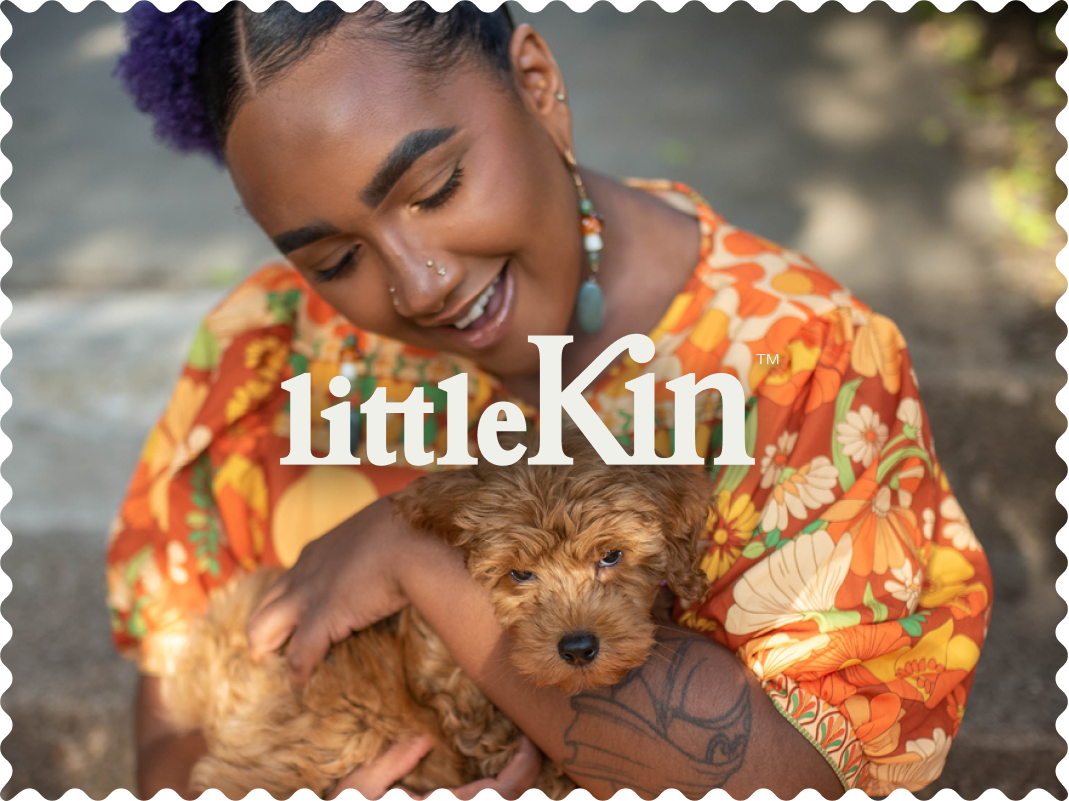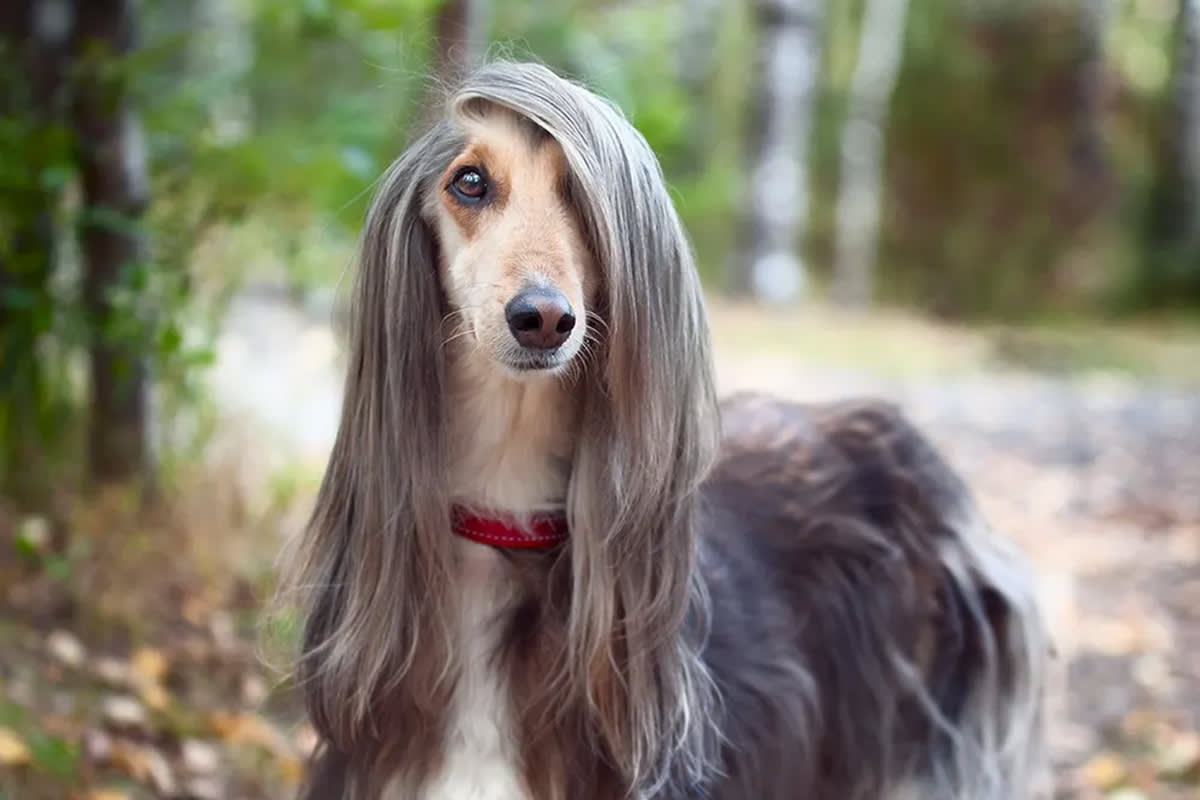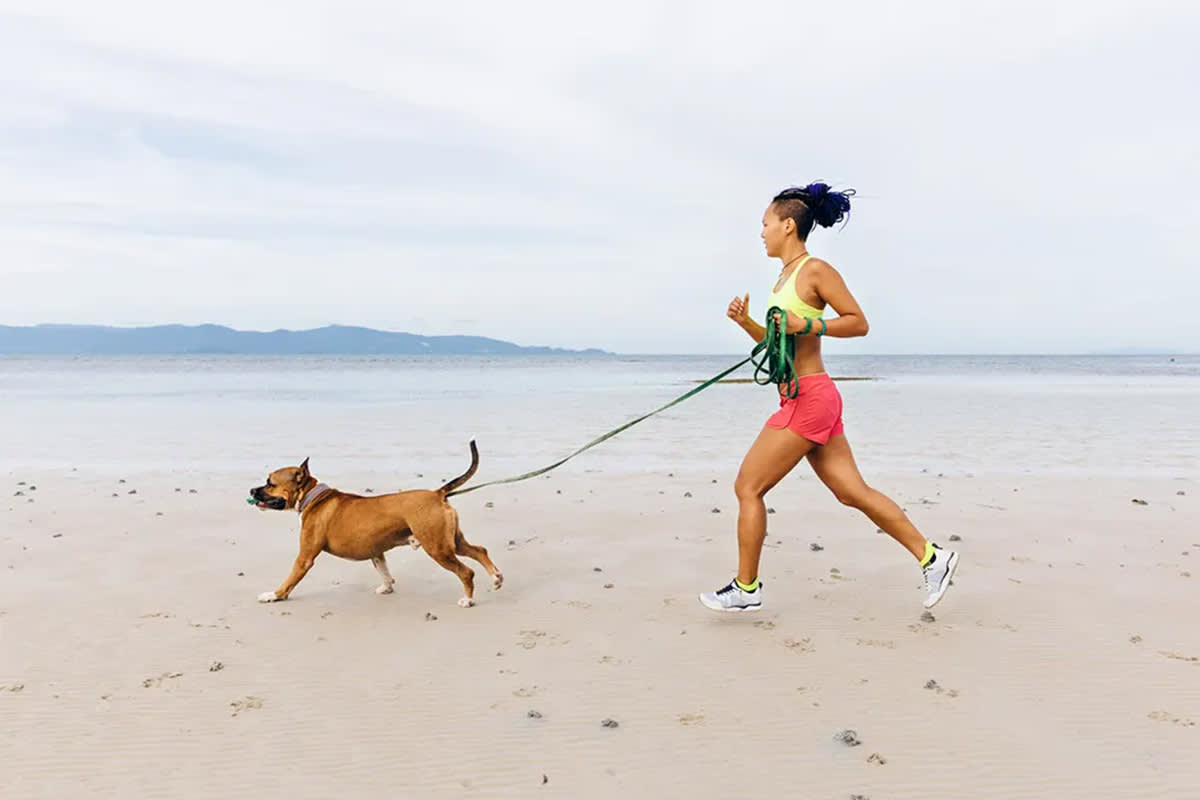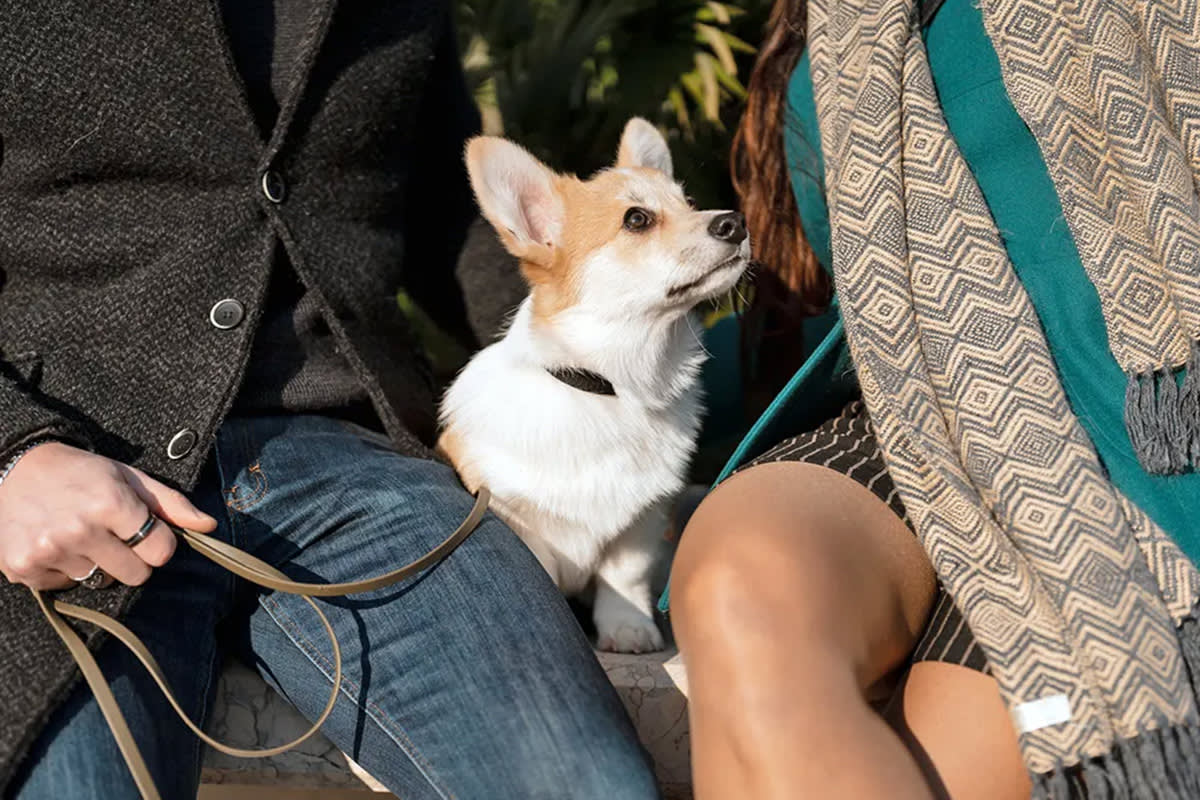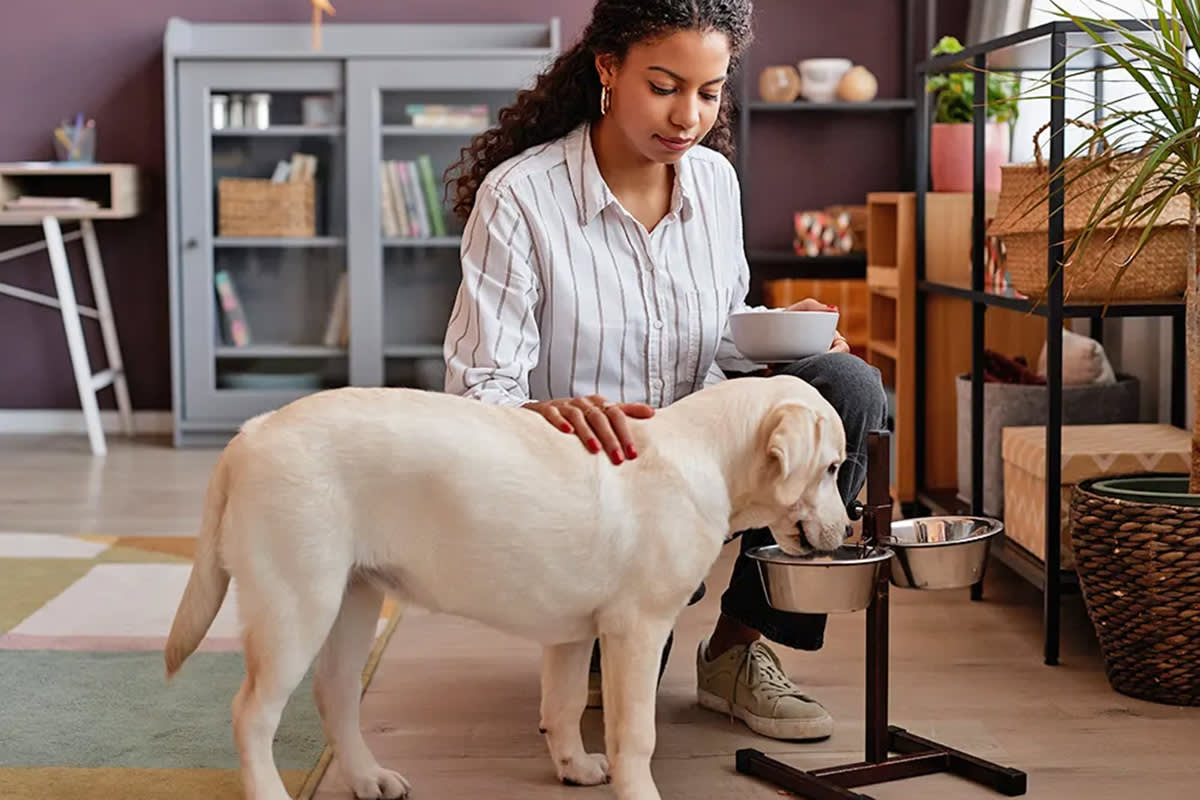10 Signs Your Dog Is Healthy
Because we know you wonder, like, all the time...

Share Article
A little paranoia can be part of the job when you have a dog. We might ask ourselves if our best buds are really happy, if we secretly annoy them, or if (God forbid) they’re at risk of contracting bird flu. (Answer: Probably not.) Underlying all of the late-night Google searches and worried glances at our precious babies is a simple wish — we just want our pets to be happy and healthy.
Every dog is different, so understanding what “normal” means for your dog will be crucial — especially when it comes to behavior. Dr. Mark Verdino, senior vice president and chief of veterinary staff for North Shore Animal Leagueopens in new tab, warns that while many pet parents will notice obvious signs of illness, like coughing, sneezing, vomiting, diarrhea, only a veterinarian can rule out the more subtle signs.
“While most people will see their own doctor at least once a year, many pet parents do not bring their pets to a vet every year,” Dr. Verdino says. “Since pets age faster than people, a lot can change in a year, especially as pets get older. The sooner health issues are found the better likelihood of management/treatment success.”
Although there’s no foolproof way to know your dog is healthy without taking them to a vet, something we should all do annually, there are a few ways to give your dog a once-over and reassure yourself that, as long as they’ve been to the vet recently, they’re probably fine. Plus, it’s best to focus on what’s right (glass half full and all) then to worry about what what could be wrong.

Per three experts we spoke with, here are 10 signs that your dog is likely A-OK.
“Guitar-shaped” body
Most pet parents don’t think their pets are overweight, but according to Dr. Verdino, studies have shown that over 60 percent of dogs in the U.S. are either overweight or obese. Per Dr. Canaan Shores, service head opens in new tab of the Small Animal Urgent and Convenient Care at the University of Illinois College of Veterinary Medicine and Service, obesity can affect dogs similarly to humans, with cardiovascular, pulmonary, renal, endocrine, and musculoskeletal risks.
“Simply put,” Dr. Shores says, “dogs who have appropriate levels of body fat tend to live longer, healthier lives.”
Ideally, you want your dog to have a good body-condition scoreopens in new tab. Dr. Ori Stollar, a veterinarian and behavior specialist with Massachusetts Veterinary Behavior Service, says that if you’re peering down at your dog’s back while they’re standing up, you want to pay attention to how their body looks. She continues: “We want to see a nice rib cage, and then kind of like goes in a little bit at the waist, and then it goes out again at the hips — so kind of like a guitar shape, in a way.”
You don’t want to see your dog’s ribcage all that much, or maybe at all, depending on the breed. But you should be able to feel it (and a little fat on top) with your hands. If you can’t see or feel the ribs without pressing very hard, then your dog is probably overweight. You should also be able to see an upward curve in their stomach, from the chest to the back of their body.
A clean face
Your dog’s eyes, ears, and nose can tell you a lot about their health. If there is no liquid randomly coming out of places, all is good. Although this should be fairly obvious, let’s just say oozing is never a good sign. “When these organs are clean, open, not red or inflamed, and free of discharge, generally they indicate health,” Dr. Shores says.
Smooth, shiny coat
This is about more than vanity; a glossy coat is another indicator that your dog is in good shape. (That is, unless your dog’s breed has a naturally coarser or less-shiny mane.)
Dogs who are feeling stressed or suffering from issues like nutrient deficiency and endocrine or hormonal imbalances can all experience the effects in their coat. And as Dr. Shores points out, other conditions, like atopic dermatitis and food allergies, can cause hair loss, reddened skin, and sores.
“We want to see that the coat itself looks nice and shiny,” Dr. Stollar says. “So, no bald spots, no excessive dandruff, no dryness or matted fur.”
Tartar-free teeth
If you’re concerned about your dog’s health, never overlook the teeth. A little bad breath might seem benign at first, but caring for your dog’s teeth early and often can save them from more complex dental conditions, which might require your vet to keep your dog under anesthesia longer during a cleaning or even pull teeth.
Dr. Stollar lists three signs that dogs’ teeth need attention: bad breath, redness at the gumline, and yellowish or brown buildup, also known as tartar.
Make sure to check all of your dog’s teeth, not just the ones in the front. Dr. Shores also notes that many dogs with advanced dental disease won’t necessarily make it obvious that something is wrong. “They will continue to eat normally with no obvious swelling, pain, or discharge from the mouth, all while they may be experiencing severe inflammation of the gums or even infection of the tooth roots,” Dr. Shores says. If you suspect your dog’s teeth need attention, get them checked out sooner than later.
No strange odors, lumps, or bumps
This one might be a bit of a “duh” moment, but monitor your dog for unusual smells, as well as growths — especially ones that seem to be expanding rapidly.
Steady energy levels
This will depend on your dog’s definition of “normal.” Some dogs are more active than others, but a healthy dog should have a consistent level of energy for daily activities. If your dog becomes reluctant to move or seems to struggle during or after play — say, by panting, coughing, limping, or vocalizing — that could be a sign that something’s wrong.
“The key here is a substantial and usually sudden change in activity level,” Dr. Verdino says. And though dogs do tend to slow down a little when they age, he still suggests seeing a veterinarian if your dog slowly starts to seem more sluggish; that could be a sign of metabolic issues or arthritis, which, while less concerning, still require attention. In general, Dr. Shores says, your dog should be ready and able to walk, trot, and run without favoring one side or being hesitant to back up.
Good posture
All dogs stand and move a little differently, but it’s important to monitor their posture to ensure that they aren’t limping or feeling pain anywhere in their body.
“A dog should stand straight,” Dr. Shores says, keeping in mind breed variances, and they should be able to “sit squarely and lay flat. The limbs should be symmetrical and tucked in appropriately and the back should be flat.” If you notice changes in your dog’s posture, that could indicate a problem.
If you suspect your dog is in pain, look for subtle cues. Dr. Stollar notes that they might keep their tail down or tuck it between their legs, or lower their ears and flatten them to the sides of their skills. Their eyes or lips might grow tense, and they might even struggle to keep their eyes open. They might also begin panting, even while at rest.
Curiosity and alertness
A healthy dog should be engaged with their surroundings — ready to investigate fascinating smells and sounds, and generally present in their bodies. They should also display the usual level of interest in socialization, both with people and other dogs. If your dog suddenly seems a little far away or reluctant, or starts displaying anxious behaviors like over-grooming, something might be off.
“A dog that is no longer interested in their environment or interactions could also be experiencing a wide range of potential illsopens in new tab from internal organ disease to arthritis to cognitive decline,” Dr. Shores says.
“Normal” behavior
This one’s broad, but it gets at the heart of many other items on this list. If your dog is healthy, they should seem like “themselves.”
“If a happy-go-lucky dog starts to look depressed, lethargic, or show signs of agitation [or] aggression, it could indicate illness or pain,” Dr. Verdino says. The signs can be even more subtle than that as well — like if your dog who usually sleeps in the bed suddenly starts sleeping on the floor. “Basically,” Dr. Verdino says, “any significant and prolonged deviation for their ‘normal’ could indicate a problem.”
Regular appetite and digestion
A healthy dog is not going to suddenly start rejecting his chow. Some dogs might get picky about flavors and just need a switch but should generally still be interested in food in general.
If your dog’s appetite suddenly declines, that’s something to investigate. That goes for water consumption, too. As Dr. Shores notes, changes in either can indicate an internal organ problem or dental disease.
Your dog’s digestion and elimination should also be relatively predictable. Some dogs need to “go” more often than others, but whatever your dog’s baseline is, it shouldn’t change much. If your dog suddenly starts urinating a lot more or less, Dr. Stollar warns, it could be a sign of a urinary tract infection (UTI). Your dog’s stool should be consistent as well.
“We want to see a nice, firm stool,” Dr. Stollar says. “If we see that there’s a big change in the frequency, or if the stool is really, really dry and the dog is really trying to force it out, or even constipated, and of course, if there's diarrhea or blood in it, these are also specific signs for something that’s going on.”
Location matters, too. If your dog who never has accidents suddenly starts peeing or pooping all over the house, it’s time to call the vet (and maybe the carpet cleaner).

Laura Bradley
Laura is a New York-based experienced writer and mom of two rescue pups. Her work has appeared in Slate, Vanity Fair, Daily Beast, The Washington Post, The Atlantic, Yahoo! News, Vulture, Grazia Magazine, and more. When she is not writing or walking the pooches, you will probably find her in the community garden.
